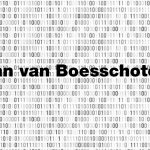In a crosswalk at rush hour, you thread your way through the oncoming crowd, your eyes passing over the faces before you. This wayfinding might feel like something you’re doing on your own. But scientists who study the movements of crowds have found that a simple trip through a crowd is much more like a dance we perform with those around us.
And so it might not come as too much of a surprise to learn that a person staring down at a phone, lost in a private world while walking, really messes with the vibe, according to a study published Wednesday in the journal Science Advances.
Humans use a variety of visual cues to anticipate where other members of a crowd will go next, said Hisashi Murakami, a professor at Kyoto Institute of Technology and an author of the new paper. He was curious what would happen if attention to those details were disrupted, and so, in a series of outdoor experiments on the campus of the University of Tokyo, he and his colleagues filmed two groups of students in a walkway about 30 feet long.
The groups walked toward each other at a normal pace. When the groups met, the students intuitively performed a maneuver familiar to those who study crowds: They formed lanes. When a person at the front of one group found a way through the oncoming group, others fell in behind that person, creating several ribbons of walkers going past one another. This was effortless, and almost instantaneous.
The researchers then asked three of the students to perform a task on their phones while they walked — simple single-digit addition, not too taxing but enough to keep their gazes directed down instead of forward.
When those students were placed at the back of their group, the distraction did not affect how the groups moved past each other. But when the distracted walkers were at the front of the pack, there was a dramatic slowdown in the whole group’s walking pace. It also took longer for clear lanes to form.
Distracted people also did not move smoothly. They took big steps sideways or dodged others in a way that the researchers rarely saw when there were no distractions. The inattentive pedestrians in the experiment induced that behavior in others as well; the people who weren’t looking at their phones moved in a more choppy fashion than they did when there were no phone-gazers. It appeared that a few people not giving their full attention to navigation could change the behavior of the whole crowd of more than 50 people.
Looking at one’s phone might have that effect because it deprives others of the information contained in our gazes, the researchers suggest. Where we look as we move broadcasts details about where we intend to go next. Without that, it’s harder for passers-by to avoid us gracefully. And merely dodging other people as we move along, eyes averted, rather than moving with purpose, makes us even more unpredictable.
As more and more people use smartphones and other devices that contribute to distracted walking, it may be necessary for architects and city planners concerned with the movement of crowds to take that altered behavior into account, the researchers say.
Dr. Murakami plans next to track people’s eye movements as they walk past one another. He hopes that these studies will reveal how our gazes helps us navigate crowds — what messages we transmit about our next steps as we perform this daily ritual, all unknowing.















